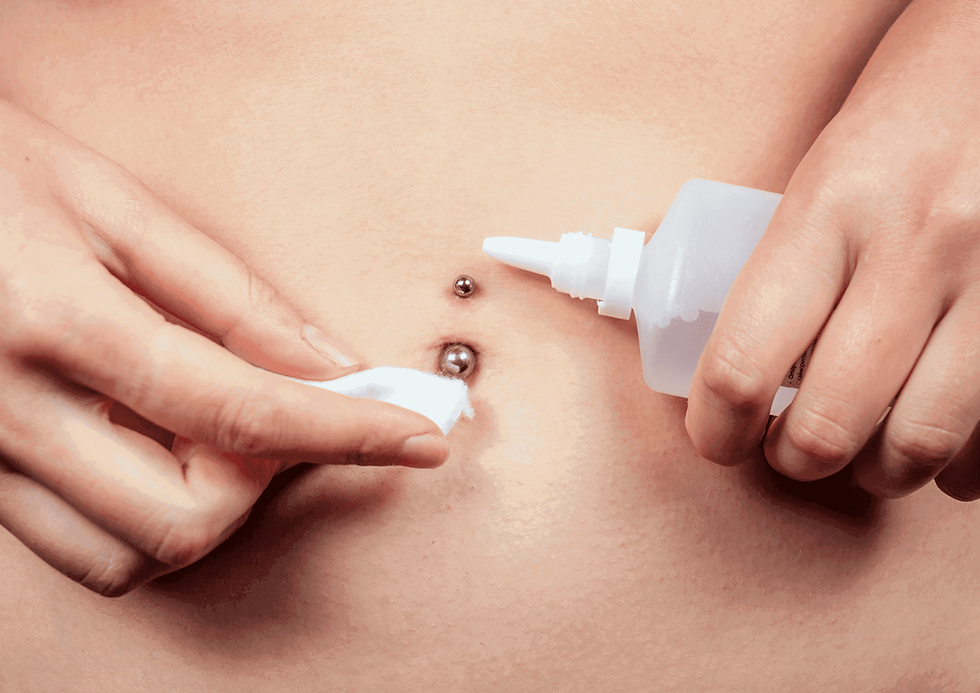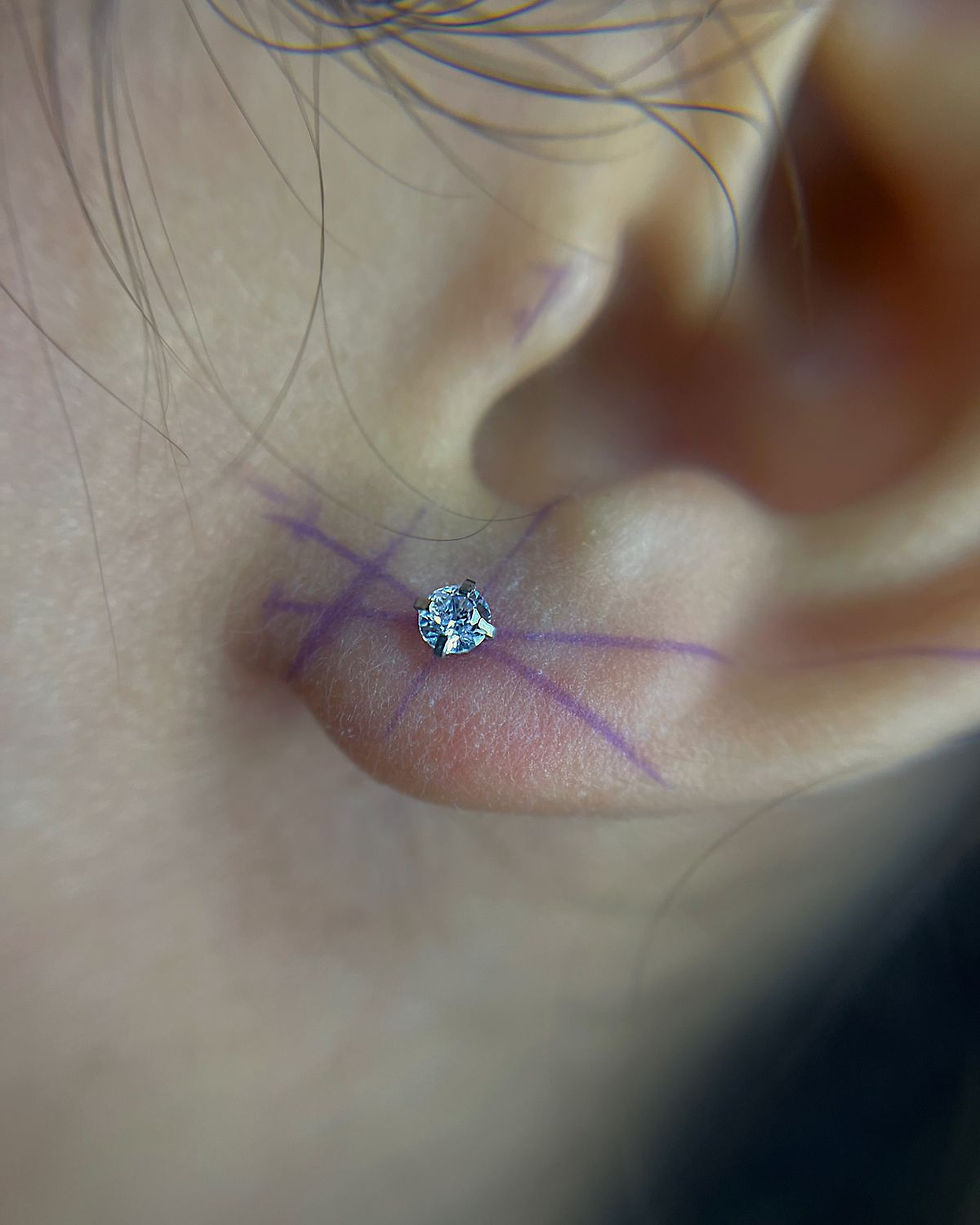Understanding Piercing Bumps: Causes, Types, and Safe Removal Methods.
- Rosalyn Du plooy
- Jul 9
- 4 min read
Introduction
When you get a new piercing, one of the most common concerns that can arise is the appearance of bumps near the piercing site. While these bumps can be unsettling, they are a natural part of the body’s healing process and often resolve with proper care. In this article, we’ll break down what piercing bumps are, why they form, the different types of bumps you might encounter, and most importantly—how to safely treat them.
Why Does the Body Form Piercing Bumps?
The body’s response to a new piercing is complex, and bumps are often part of the healing process. When you get pierced, the body perceives the jewelry as a foreign object, leading to inflammation and irritation. The body attempts to protect itself and heal by sending extra blood and fluid to the area. This can result in swelling, bumps, or irritation near the piercing site.
Bumps can appear for several reasons, and understanding why they form can help you address the issue more effectively. Let’s dive into the most common causes.
Common Reasons Piercing Bumps Form
Trauma or Irritation: Piercings are delicate, especially in the first few months of healing. Bumping the piercing during sleep, while cleaning, or through contact with clothing or accessories can cause irritation. This irritation can trigger the formation of a bump as the body attempts to repair the damaged tissue.
Infection: Infections, while not the most common reason for bumps, can lead to swelling and redness. An infection can also cause pus or discharge to form around the piercing site, making the bump appear larger or more noticeable. However, infections are often accompanied by other signs such as pain, heat, and a change in the color of the bump.
Keloid or Hypertrophic Scarring: Keloids are raised, thick scars that form when the body overproduces collagen during the healing process. A hypertrophic scar is similar but doesn’t grow as large as a keloid and typically stays within the original wound boundary. Both types of scars can cause bumps at the piercing site.
Piercing Rejecting or Migrating: Sometimes, the body may try to reject the piercing, particularly if the jewelry is the wrong size or material. The bump in this case may appear due to the body pushing the jewelry out. This is more common with piercings that are too tight or placed in areas with poor healing conditions.
Allergic Reaction: An allergic reaction to the metal in your jewelry can trigger inflammation and a bump. Most commonly, people are allergic to nickel, so it’s important to opt for hypoallergenic materials like titanium, niobium, or surgical steel to avoid this issue.
The 3 Main Types of Piercing Bumps
Now that we’ve covered the reasons why bumps form, let’s look at the three most common types of piercing bumps and what they mean.
1. Hypertrophic Scarring Bump
What It Is: This type of bump is a raised, red, and firm mass that forms around the piercing site due to excess collagen production during healing.
Why It Appears: It’s a result of the body’s attempt to heal and protect the piercing, especially if the piercing has experienced trauma or irritation.
How to Treat It:
Salt Soaks: Soak the piercing in warm saline solution (1/4 teaspoon of non-iodized sea salt in 8 oz/ 1 cup of warm water) for about 5-10 minutes a couple of times a day.
Massage: Gently massaging the area with a clean, sterile finger can help break down scar tissue.
Tea Tree Oil: Some people find that a diluted tea tree oil solution (about 1-2 drops in your salt solution) can reduce the bump over time, but it should be used sparingly as it can irritate sensitive skin.
2. Keloid Bump
What It Is: Keloids are thick, raised scars that grow beyond the boundaries of the original piercing site. They can be pink, purple, red, or darker than the surrounding skin and may continue to grow over time.
Why It Appears: Keloids are a result of excessive collagen production during healing, often in response to trauma or a genetic predisposition to keloid scarring.
How to Treat It:
Steroid Injections: A dermatologist may offer steroid injections to flatten the keloid and reduce inflammation.
Pressure Earrings: These are specialized earrings that apply gentle pressure to the keloid to help flatten it over time.
Avoid Picking or Irritating: Do not pick at or irritate the keloid, as it may worsen.
Surgery: You can have them surgically removed.
3.Piercing Bumps Due to Infection
What It Is: These bumps are typically red, inflamed, and may have discharge or pus. Infections are often accompanied by pain, warmth, or increased sensitivity at the site.
Why It Appears: Infection occurs when bacteria enter the piercing wound, often due to improper aftercare or external contamination.
How to Treat It:
Clean with Saline Solution: Use a saline solution to gently clean the area and avoid harsh chemicals or alcohol.
Avoid Removing Jewelry: Removing the jewelry during an infection can cause the wound to close around the bacteria, worsening the infection. Leave the jewelry in place unless directed otherwise by a healthcare professional.
Consult a Professional: If signs of infection persist or worsen (fever, green or yellow pus), see a doctor or piercer to discuss potential antibiotics or other treatments.
How to Prevent Piercing Bumps
While piercing bumps can happen for various reasons, there are steps you can take to minimize their occurrence:
Follow Aftercare Instructions: Consistent and gentle care is key. Clean your piercing regularly using saline solution, and avoid using harsh chemicals like hydrogen peroxide or alcohol.
Avoid Sleeping on the Piercing: Especially during the healing process, sleeping on the piercing can cause unnecessary friction and pressure, leading to bumps.
Be Mindful of Jewelry Material: Opt for high-quality, hypoallergenic jewelry to reduce the risk of irritation and allergic reactions.
Keep the Area Clean and Dry: Moisture can trap bacteria, so make sure to keep the area clean and dry, particularly after swimming or showering.
Avoid Touching the Piercing: Always wash your hands before touching your piercing to prevent transferring bacteria.
Conclusion
Piercing bumps are a common part of the healing process and, while they can be frustrating, they don’t always signal a serious problem. Understanding the different types of bumps, why they form, and how to treat them safely can help you manage your piercing care with confidence. Remember, if you’re unsure or the bump persists, it’s always a good idea to consult a professional piercer or healthcare provider to ensure your piercing heals as smoothly as possible.



Comments